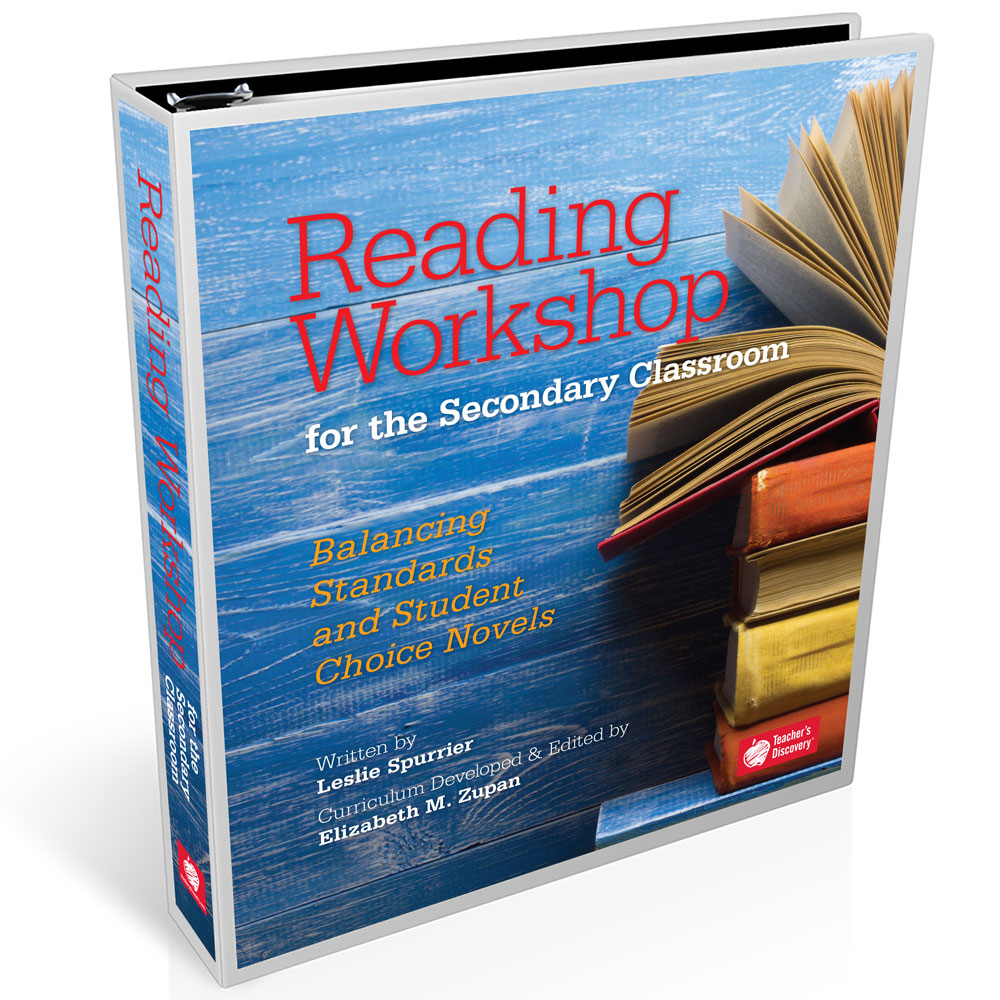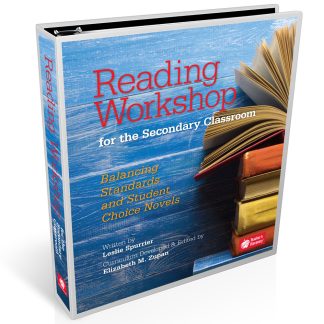Description
Make Differentiation the Foundation of Your ClassroomTransition to the reading workshop method TODAY using the Reading Workshop for the Secondary Classroom/em curriculum. The six included units–complete with lessons, handouts, and activities–provide you with everything you need to teach the literary concepts and reading strategies required by the standards. All lessons universally apply to any book your students may choose to read.Unit 1: I Belong Herep style=”margin-left:.5in;”This unit introduces students to reading as a lifelong skill to be nurtured and enjoyed–both inside and outside of school. During this unit, students reflect on the attitudes, habits, and behaviors that have shaped their reading lives up to this point. As the unit progresses, the focus subtly shifts to the skills that form the foundation of reading, including the building blocks to improve reading skills, grow confidence, and encourage a love of reading. Throughout the unit, teachers serve as encouragers, guides, and fellow readers–inviting students on a journey that leads to learning, joy, and a lifetime of reading.Unit 2: Building Characterp style=”margin-left:.5in;”;ldquo;Getting into;rdquo; a book refers to the way a reader connects on an intimate and personal level with its characters. Whether we root for a protagonist or despise a villain, characters draw us in as readers and lay the foundation for the heart of a book. In this unit, students begin to learn strategies that help them understand a character’s unique place and role in a story, evaluate characters’ points of view in relation to the larger plot, and explore the specifics of a character in order to better comprehend and predict that character’s behaviors. All of these skills lend to a deeper, richer experience with the text and, of course, its cast of characters.Unit 3: Parts of the Whole–Story Elementsp style=”margin-left:.5in;”This unit focuses on the key elements that make up a story: setting, language, conflict, and character development. Students learn about how these elements interact with the moving parts of a plot to create dynamic text. Through in-depth analysis, students begin to understand not just what the parts of the story are but how they directly impact one another, influencing and directing the reader through the story.Unit 4: Collecting Information–Nonfictionp style=”margin-left:.5in;”nfiction gets a bad rap.p style=”margin-left:.5in;”As we develop a love of reading in our students, let us not forget the importance and place of nonfiction. Extending beyond textbooks, manuals, and newspaper articles, nonfiction satisfies readers’ hunger to understand the world around them in a way that perhaps feels more credible than a fictitious story. Moreover, reading nonfiction develops a sound base of background knowledge in students and prepares them for more complex texts that become the foundation of reading in both higher education and the professional work force.p style=”margin-left:.5in;”This unit aims to formally introduce students to nonfiction text, equipping them with the skills necessary to do more than just skim, scan, and look for important ideas. By covering text features, text structure, content validity, and more, the unit lays the groundwork on which to build an understanding of nonfiction.Unit 5: Hidden Gems–Looking at Literary Techniquesp style=”margin-left:.5in;”Unit 5 provides a detailed overview of literary techniques used by authors. Building on the previous units, ;ldquo;Hidden Gems;rdquo; allows students the space and time to explore things like language and point of view in a way that activates critical thinking skills and generates authentic application. Unlike previous units, Unit 5 concludes with a culminating project. This creative application of skills also incorporates information from prior units and necessitates that students ;ldquo;bring it all together.;rdquo;Unit 6: Book Crews–Coming Together Around Booksp style=”margin-left:.5in;”This unit is a little bit different than all the rest, but just as much fun. In order to make sure the unit runs smoothly, please read through this synopsis carefully. We’re providing detailed instructions on book clubs, key elements for preparation, and helpful hints that will ensure your students’ experiences are consistent and that they’re set up for success.span style=”color:#FF0000;”Download the FREE sample lessons located in “Additional Info.”/spanCopyright 2019. Target grade levels: 6dash;10. High school, middle school. Reproducible. 420 pages.Binder: 1.5




